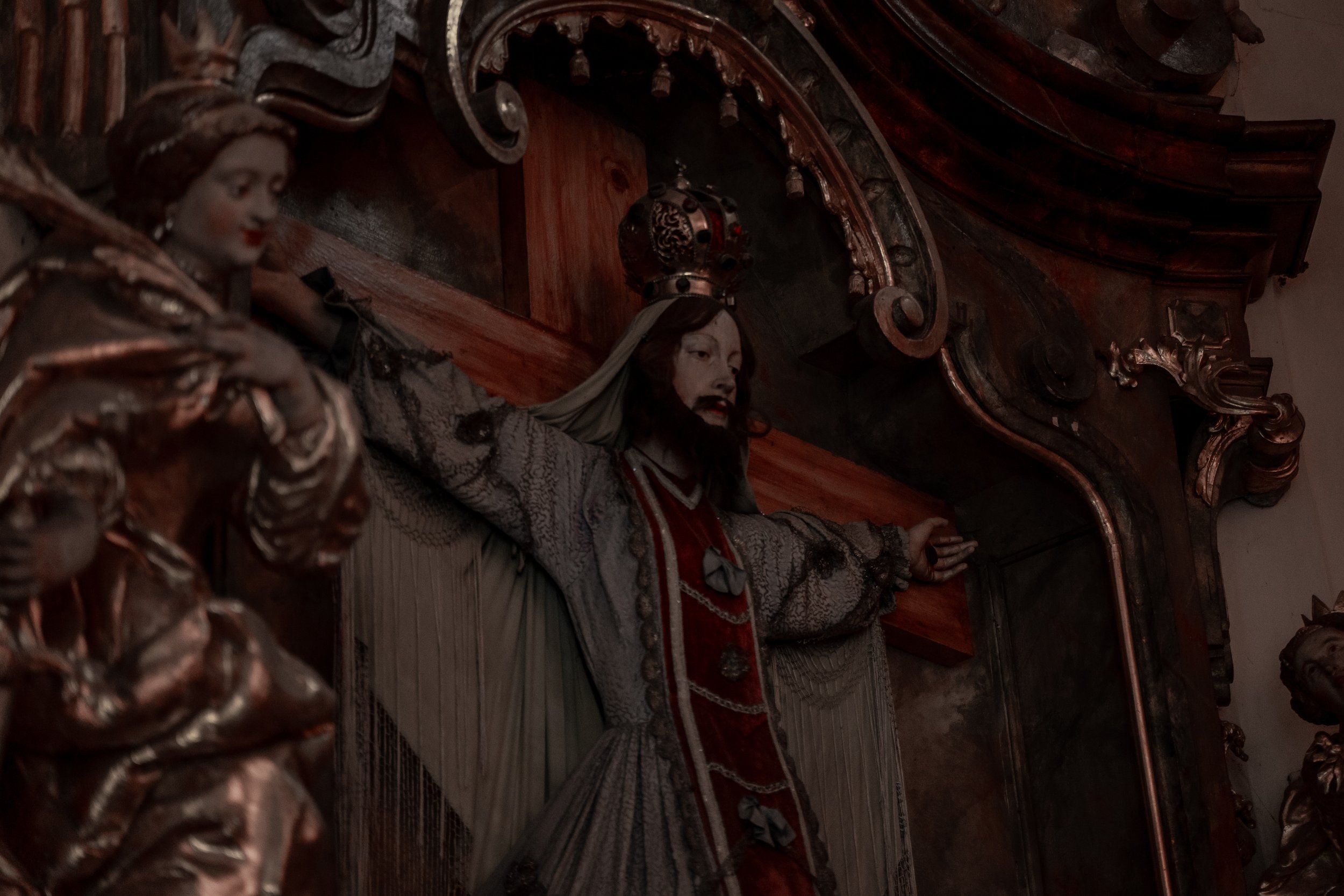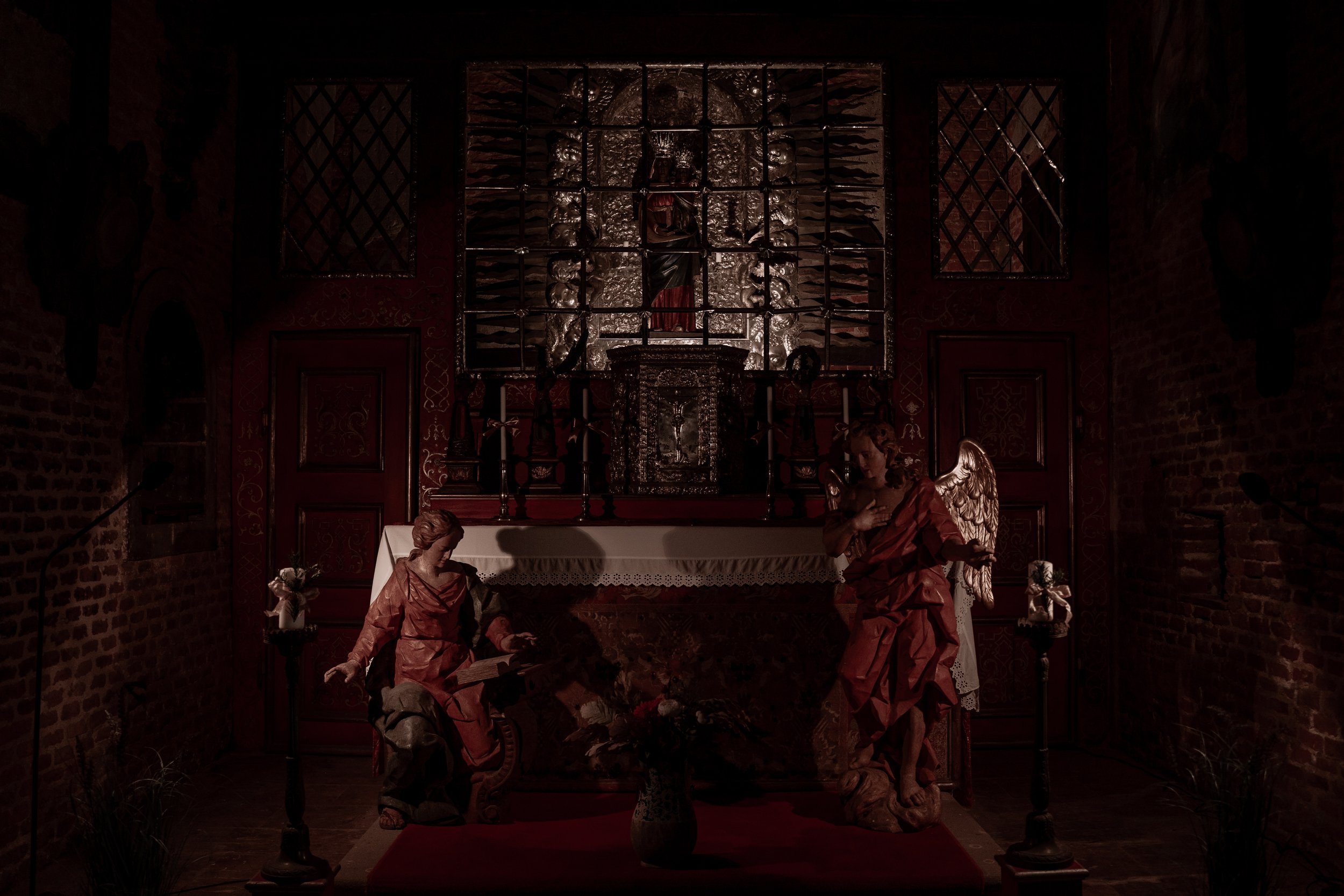Loreto






Upon entering this striking baroque church, you are immediately welcomed by the numerous statues of youthful angels and children which line the walls outside. Step inside to discover a variety of treasures as well as oddities and curiosities which lay deep in the depths of this mysterious complex.
In the middle of the site, you will find the impressive Santa Casa which was designed to replicate the Sacred house (the home of the Virgin Mary) in the Holy Land. It is said that the original Santa Casa was transported by angels to the Italian town of Loreto as the Turks advanced on Nazareth. Many of these replicas can be found across Europe but this version is particularly special due to the exquisite relief panelling that adorns the outer walls and its dark red interiors which include 17th century frescoes, ornate silver metalwork and a wooden effigy of ‘Our Lady of Loreto’.
Behind the Santa Casa sits the Church of the Nativity of Our Lord. This is a stunning example of Baroque architecture with highly decorative pieces and an exceptional mathematical design. The building was constructed in the early 18th century by architect Kilián Ignaz Dientzenhofer who had a strong background in mathematics and philosophy. The church is particularly beautiful and includes two skeletons in its side altars. These are the remains of the Spanish saints Felicissima and Marcia who are dressed in 18th century clothing and are wearing wax masks to conceal their faces.
Walking through the cloistered arcades you will discover a small chapel called Our Lady of Sorrows which is located in the Southwest corner. Here you will see a crucified bearded lady known as St Wilgefortis or St Starosta. She was said to be the daughter of a Portuguese king who, against her wishes, promised her hand in marriage to the king of Sicily. As legend goes, after a night of sorrowful prayers, she awoke with a beard and the engagement was immediately called off. Her father was so enraged he decided to have her crucified. This led to her becoming the patron saint of all oppressed and unhappily married women around the world.
Next make your way upstairs to the treasury to view the rare collection of artworks, precious objects (including the Monstrance with its 6,222 diamonds) and, in my opinion the main reason to visit this location– the replica of the Loreto Crypt.
In 2011 there was a fascinating discovery in the crypt of the church that revealed a selection of unique Baroque mural paintings depicting motifs of death and resurrection. The frescos were created in 1664 using the special technique of chiaroscuro – employing exclusively the shades of black and grey. The work is thought to be that of a Capuchin order painter, who took his inspiration from Flemish and Dutch prints, with the main scene depicting the raising of Lazarus, which was based on the famous etching by Rembrandt. The selection of macabre themes and vanitas motifs include ‘A boy with a skull’, ‘The Triumph of death’, ‘Seated skeleton with scythe’ along with many others. The small room is located behind a black drape towards the back of the treasury and although it is not the original crypt it is still extremely interesting to visit.
The bell tower is another fascinating part of the church, as each hour (during opening times) the 27 Dutch bells which form the clock tower peel, play a tuneful Baroque Marian melody, which sounds absolutely incredible and is yet another reason to visit this famous pilgrimage site!
